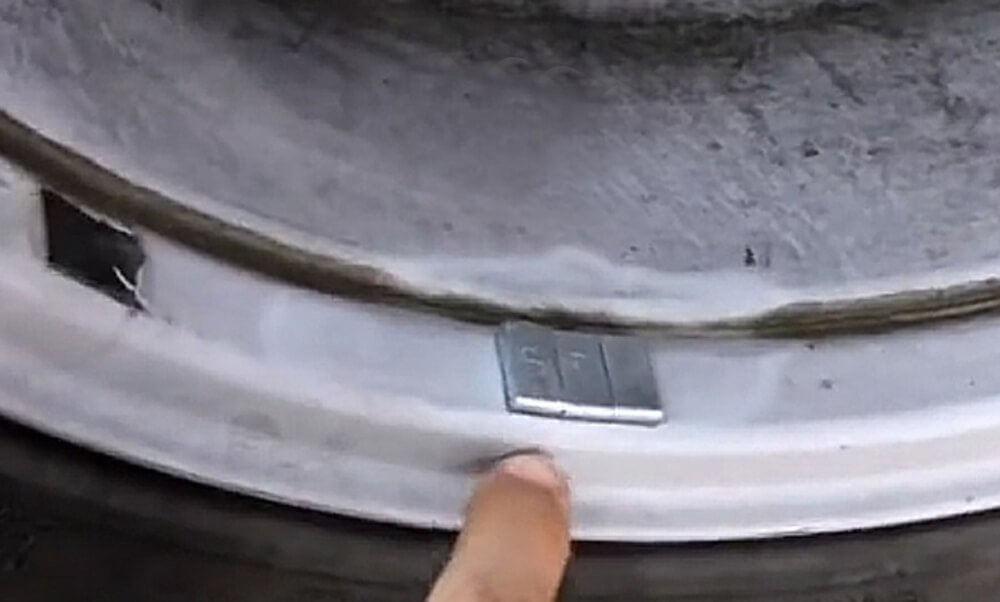Can you place adhesive weights on steel wheels
Date: 2025-05-29 Categories: Company News
Steel Adhesive wheel weightsYes, adhesive weights can generally be placed on steel wheels, but there are several important considerations to keep in mind to ensure proper application, safety, and effectiveness. Here’s a detailed breakdown:
1. Compatibility of Adhesive Weights with Steel Wheels
Adhesive weights (typically made of steel, lead or zinc, often with a sticky backing) are designed for wheel balancing. Steel wheels have a smooth, metallic surface that can bond well with the adhesive if the surface is prepared correctly. However, factors like surface cleanliness, texture, and environmental conditions affect adhesion:
- Surface Preparation: The wheel must be clean, dry, and free of dirt, grease, rust, or paint. Any contaminants can weaken the adhesive bond, causing weights to fall off.
- Rust and Corrosion: Steel wheels are more prone to rust than alloy wheels. If rust is present on the mounting area, it must be removed (e.g., with sandpaper) before applying weights to ensure a solid bond.
- Paint or Coatings: If the steel wheel has a painted or coated surface where the weights will be placed, the adhesive may not stick as well. In some cases, the paint might need to be gently sanded to create a rough surface for better adhesion (but be careful not to damage the wheel’s protective coating).
2. Types of Adhesive Weights and Their Suitability
- Standard Adhesive Weights: These are suitable for most steel wheels if the surface is properly prepared. They are designed for internal wheel balancing (applied to the inner rim of the wheel).
- Clip-On Weights: Alternatively, clip-on weights (which attach to the wheel rim via a metal clip) are another option for steel wheels. They may be more secure in some cases, especially if the wheel surface is difficult to clean or has irregularities. Clip-on weights are less dependent on adhesive and are a common choice for steel wheels in automotive applications.
3. Safety and Practical Considerations
- Risk of Weight Loss: If adhesive weights are not applied correctly, they can detach while driving, which is a safety hazard (e.g., weights flying off or causing uneven wheel balance). This can lead to vibrations, tire wear, or even accidents.
- Professional vs. DIY Application: For best results, have adhesive weights applied by a professional tire shop. They have the tools (e.g., wheel balancers) and expertise to ensure weights are placed in the correct location and with proper surface preparation.
- Environmental Factors: Extreme temperatures (e.g., hot weather or cold climates) can affect adhesive strength. For example, cold temperatures may make the adhesive less sticky, while heat can cause the adhesive to deteriorate over time.
- Wheel Maintenance: Regularly inspect adhesive weights for signs of looseness or detachment, especially after driving on rough roads or in harsh conditions.
4. Alternative Options for Steel Wheels
If you’re concerned about adhesive weight durability on steel wheels, consider:
- Clip-On Weights: As mentioned, these are mechanically attached to the wheel rim and are less reliant on adhesive, making them a more secure option for steel wheels, especially in rugged use cases.
Summary: Steps to Properly Apply Adhesive Weights on Steel Wheels
- Clean the Surface: Thoroughly clean the area on the wheel rim where the weight will be placed using soap, water, and a degreaser. Dry completely.
- Inspect for Rust/Imperfections: Remove any rust or paint from the mounting spot (if necessary) to create a smooth, bare metal surface.
- Apply the Weight: Peel the adhesive backing and press the weight firmly onto the wheel, holding it in place for several seconds to ensure bonding.
- Balance the Wheel: Use a wheel balancer to determine the exact location where weights are needed for optimal balance.
- Regular Inspection: Check weights periodically to ensure they remain attached, especially after exposure to harsh conditions.
In conclusion, adhesive weights can be used on steel wheels, but proper surface preparation and maintenance are crucial for their effectiveness and safety. For most automotive applications, clip-on weights are often a more reliable choice for steel wheels due to their mechanical attachment, reducing the risk of detachment. Always consult a professional tire technician for the best advice based on your specific wheel and vehicle needs.
Tags:
Share:
Prev:
What do wheel weights do?
Next: In-depth analysis of the impact of environmental regulations on the wheel balance weight market
Next: In-depth analysis of the impact of environmental regulations on the wheel balance weight market
Related
- The names of wheel weight in various countries
- After completing the tire repair, should I get a dynamic balance
- The names of wheel weight in various countries
- The 2nd Pakistan-China Business to Business (B2B)
- What Are Wheel Weights?
- Perfect wheel weights with Shengshiweiye wheel weight contrast
- The hidden costs behind low-priced wheel weight: the battle between quality and price
- Motorcycle Wheel Weights: A Complete Guide

